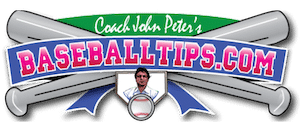Discover how stride lines and power lanes on pitching mats can transform your pitching mechanics and consistency. Learn why these specialized markings are crucial for developing perfect form.
_______________________________
Stride Lines and Power Lanes: Essential Features for Effective Pitching Training
When it comes to developing perfect pitching mechanics, the details make all the difference. Stride lines and power lanes might seem like simple markings on a pitching mat, but these specialized features are game-changers for pitchers at every level. After two decades of working with pitchers from Little League to the pros, we’ve seen firsthand how these visual guides can transform inconsistent throwers into precision pitching machines.
What Are Stride Lines and Power Lanes?
Stride lines are straight pathways marked on pitching mats that guide a pitcher’s front foot during the delivery. Power lanes, meanwhile, are wider designated areas that help pitchers visualize and maintain proper direction toward home plate throughout their entire motion.
These aren’t just fancy additions to training equipment – they’re purpose-built features that address the fundamentals of pitching mechanics. When a pitcher’s stride consistently falls in line with their target, everything else tends to follow.
How Stride Lines Improve Mechanical Consistency
The most common flaw we see in developing pitchers is inconsistent stride direction. One pitch they’re stepping toward the plate, the next toward the batter, and the next toward first base. The result? Wildly inconsistent command.
Stride lines create muscle memory through repetition. By providing a visual target for foot placement, pitchers gradually internalize proper mechanics until they become second nature. This isn’t about robotic movements – it’s about building a foundation of consistency that allows natural talent to shine.
Power Lanes: The Secret to Directional Force
Pitching is all about efficiently transferring energy from the lower body through the torso and into the throwing arm. Power lanes help pitchers understand and visualize this chain of energy transfer by keeping their momentum flowing directly toward the target.
When a pitcher stays within their power lane throughout the delivery, several things happen:
Their hips and shoulders naturally align toward home plate, preventing the common “flying open” problem that robs velocity. Their balance point becomes more stable, leading to better control of breaking pitches. And perhaps most importantly, stress on the throwing arm decreases significantly when the body moves in proper sequence.
Real Training Benefits We’ve Observed
Over years of working with teams and individual players, we’ve noticed pitchers who train with stride lines and power lanes tend to:
Develop consistent mechanics faster than those working on unmarked surfaces. Experience fewer arm injuries due to improved body alignment. Make more efficient use of practice time by receiving immediate visual feedback. Transition their improved mechanics from practice to game situations more effectively.
A college pitching coach we work with regularly reported that his freshmen pitchers cut their adjustment period nearly in half after he implemented training mats with clear stride lines and power lanes in their bullpen sessions.
Choosing the Right Equipment
Not all pitching mats are created equal when it comes to these training features. The most effective ones have:
Clearly contrasting colors for maximum visibility. Proper spacing that accommodates pitchers of different heights and stride lengths. Durable materials that maintain their markings through thousands of repetitions. Construction that provides a stable, game-like surface underfoot.
We’ve tested dozens of options over the years and only carry those that truly stand up to daily use while providing the proper visual cues pitchers need for development.
Integrating Stride Lines and Power Lanes into Practice
For coaches looking to maximize the benefits of these training features, we recommend starting with basic familiarization drills before progressing to full pitching motions. Have pitchers practice just their stride without throwing, then add in upper body movements, and finally incorporate full-speed pitches.
This progressive approach builds awareness and control layer by layer, rather than overwhelming young pitchers with too many mechanical thoughts at once.
Take Your Pitching Program to the Next Level
Ready to help your pitchers develop the mechanical consistency that leads to command, velocity, and durability? Our professional-grade pitching mats with precision stride lines and power lanes are the same equipment used by championship programs across the country.
Call us today to discuss which options best suit your program’s needs and budget. We’ve been in the dugout and on the mound ourselves – we understand the challenges you’re facing and can recommend equipment that delivers real results, not just promises.
Your pitchers deserve training tools that actually improve their mechanics, not just take up space in your facility. Let’s work together to build a pitching program that develops consistent, confident, and healthy arms.
